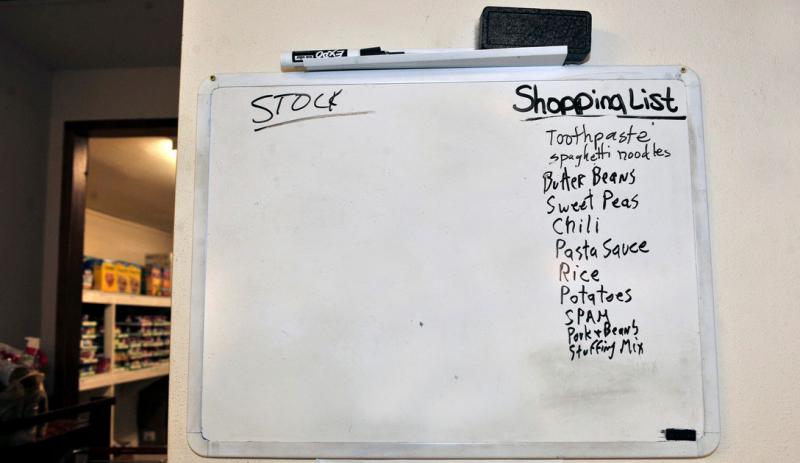
Originally written by Megan Erickson, former SDSU Extension Nutrition Field Specialist.
When faced with unexpected events, such as a health crisis or natural disaster, planning meals and grocery shopping often comes to mind along with questions: What should I plan to make? What groceries do I need? How much do I need? Don’t forget about nutrition when preparing meals for an extended period of time. Keep in mind MyPlate and the five food groups when shopping and making meals – fruits, vegetables, protein, grains and dairy.
Here are some tips to help prepare you for time spent at home and to keep you and your family staying healthy.
Keep in mind food storage space.
Plan ahead. Before going to the grocery store to stock pile on foods, check what kind of shelf, refrigerator and freezer storage space you have. Sometimes buying in bulk can save you money, but no need to buy excess food if it will spoil before consumption.
Buy frozen and canned fruits and vegetables.
Buying frozen and shelf stable produce provide a longer shelf life and prevent food waste. Fresh fruits and vegetables are a great option when on sale and available. Consider other ways to fit in fruits and vegetables into your daily meals and snacks. When selecting, make simple choices such as canned fruit in 100% fruit juice versus syrup or canned vegetables with no salt added.
Buy shelf-stable foods.
Also, buying shelf-stable foods not only saves money but helps families stay prepared. Nutritious foods such as canned fruits and vegetables, dried fruit, canned tuna, brown rice, peanut butter, dried beans and whole grain pasta are just a few items to keep stocked in your pantry. Here is a list of other foods to have on hand.
Food safety.

Handling food safely will keep you and your family safe and will prevent foodborne illness.
Following these four simple steps (Clean, Separate, Cook, Chill) can help protect your family from food poisoning at home.
- Clean. Wash hands and surfaces often. So important!
- Separate. Separate raw meats from other foods. Use separate cutting boards when meal prepping raw meat and produce. Use meat within 3-5 days when refrigerated or freeze for later use.
- Cook. Cook to the right temperature. View the USDA Safe Minimum Internal Temperature Chart for safe internal cooking temperatures.
- Chill. Refrigerate food promptly. Is your refrigerator set to the correct temperature of at or below 40 degrees Fahrenheit?
Get kids involved.
Are your kids bored? With kids spending extra time at home, this is a great opportunity to get kids busy in the kitchen. Try a new, fun recipe or teach them age-appropriate cooking skills. SDSU Extension offers some fun ideas to teach kids how to cook. Getting the whole family involved will create new, fun memories.
And lastly, practice proper hand hygiene.
- Wet hands with water.
- Apply soap.
- Lather well.
- Rub your hands, palm to palm, vigorously for at least 20 seconds. *Remember to scrub all surfaces, including the backs of your hands, wrists, thumbs, between your fingers, and under your fingernails.
- Rinse well.
- Dry hands with clean towel.
- Use towel to turn off faucet.
Source: Centers for Disease Control and Prevention


